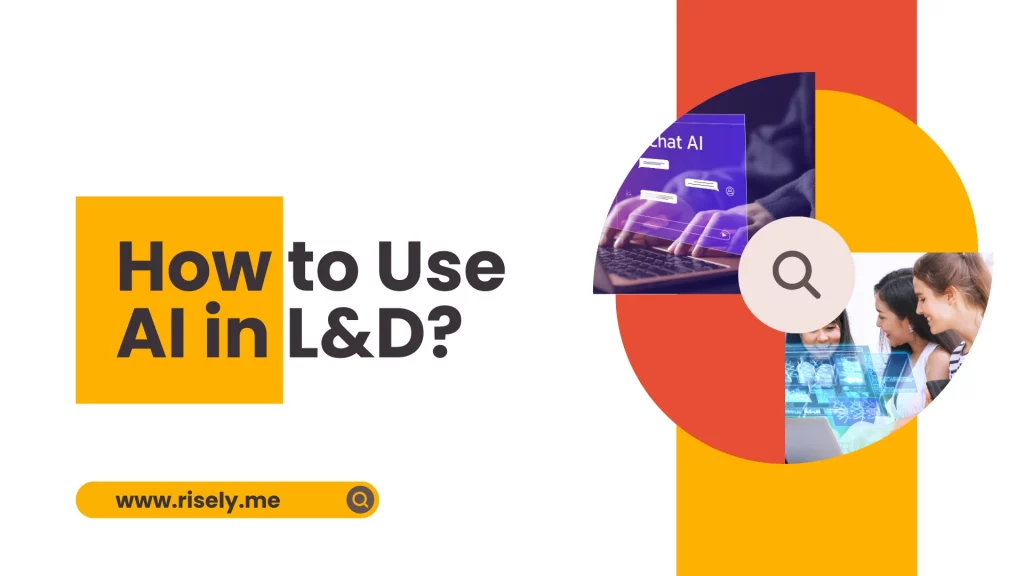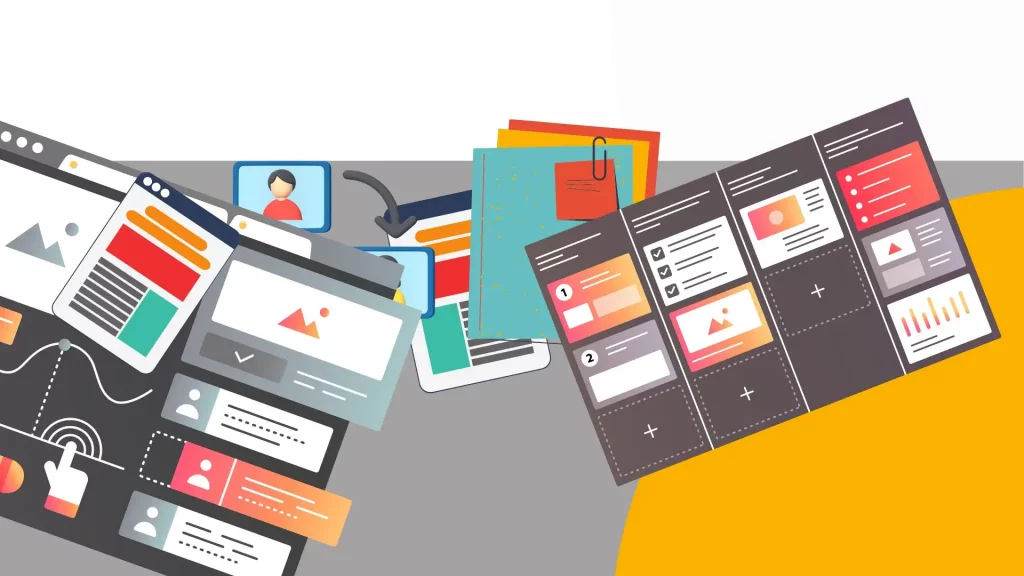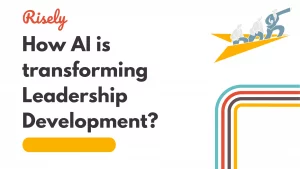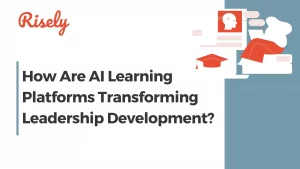7 Easy Ways to Use AI in Learning and Development
AI is changing the learning experience. It offers personalized learning paths, automates tasks, and gives useful insights about learner progress and areas that need improvement. AI for learning and development does not need to mean content creation alone! In fact, there are many effective ways to leverage it in your team. You are at the right spot if you wonder what, why, and how. This blog will decode seven impactful yet easy ways to 10x your L&D superpowers with AI.- 7 Easy Ways to Use AI in Learning and Development
- 7 Impactful Ways to Add AI into your L&D Flow
- #1 Use AI to Personalize Learning Content
- #2 Add an AI Coach to Offer 24/7 Support
- #3 Use Gamification to Pump Up Engagement
- #4 Forecast Learning Outcomes with Predictive Analytics
- #5 Build Empathy with AI-based Personalization
- #6 Add AI to Reinforce Learning After Training
- #7 Conduct Skills Gap Analysis in Real-time with AI
- To Sum Up
- 7 Impactful Ways to Add AI into your L&D Flow
7 Impactful Ways to Add AI into your L&D Flow
Say “trends,” and you’ll hear back “AI!” As one of the hottest and most anticipated L&D trends for 2025, we want AI to change the world for us. Creating engaging and useful training content is very important for learning and development success. AI tools are becoming strong supporters of L&D experts. They help by automating the work of creating content. This gives more time to work on important plans. But, what exactly does that mean? Let’s look at seven new uses of AI in learning and development (L&D). These technologies are changing how companies train their employees. AI helps you create personalized learning paths, offers virtual mentors, and adds fun through gamified experiences. All of these tools can make learning better for your people. When your L&D teams use these advanced AI tools, they can work more efficiently. You can also engage employees more and improve training programs. This way, employees get the knowledge and skills they need to succeed in today’s workplaces, while your impact becomes the talk of the town.#1 Use AI to Personalize Learning Content
One big benefit of AI in learning and development is its ability to create personalized learning experiences. AI algorithms can look at a lot of data about each learner. This includes their job roles, skills, how they like to learn, and what they want for their career. Using this data, with the help of AI, you can make adaptive learning pathways that fit individual needs. Personalization is a huge benefit when it comes to learning, especially when the content and challenges are dynamic, such as in leadership development. Since there are many factors in a leader’s learning ability including their learning preferences, time availability, years of experience, industry, etc. personalized journeys make more sense than the usual cookie-cutter leadership development programs. AI helps you achieve this. For example, at Risely, we begin the process by asking the leaders about their people management challenges and then assign learning modules along the path. Similarly, we can think of a learning platform that changes the difficulty level of lessons based on how the learner is doing. If an employee is doing well in a certain area, the AI system can suggest harder material to keep them interested. But if a learner finds a topic tough, the AI can offer more help or recommend other learning resources. By giving tailored learning paths, AI helps your organization’s employees learn at their own speed and focus on the areas where they need the most support.#2 Add an AI Coach to Offer 24/7 Support
Providing personal coaching and guidance is hard. This is true for big organizations with different workers. Just think of the diverse needs that the sales and engineers managers have within your organization. And that’s just two job roles. AI-powered virtual mentors give steady and tailored support during the learning process to each role. These virtual coaches serve as personal guides. They answer questions, give feedback on assignments, and provide encouragement. For example, in a sales training program, a virtual mentor can give salespeople real-time feedback on their pitches. It can suggest ways to improve and point out their strong points. Or, an AI coach like Risely’s Merlin offer support to people managers 24/7 for whatever situation or challenge they need. It ensures that they are constantly covered and never need to hesitate before seeking help, even for very niche or specific issues. For instance, suppose you are a manager named Andrew who needs to take updates from a difficult colleague. You know the conversation is going to go downhill. There will be excuses, unclear answers, and you will lose your mind. What if you could prepare and practice? That’ll help you when the punches are thrown your way. With Merlin, our AI coach for people managers, you can set-up role plays after programming what the other person behaves like. Here’s what your conversation with the reluctant colleague, Neil, might look like: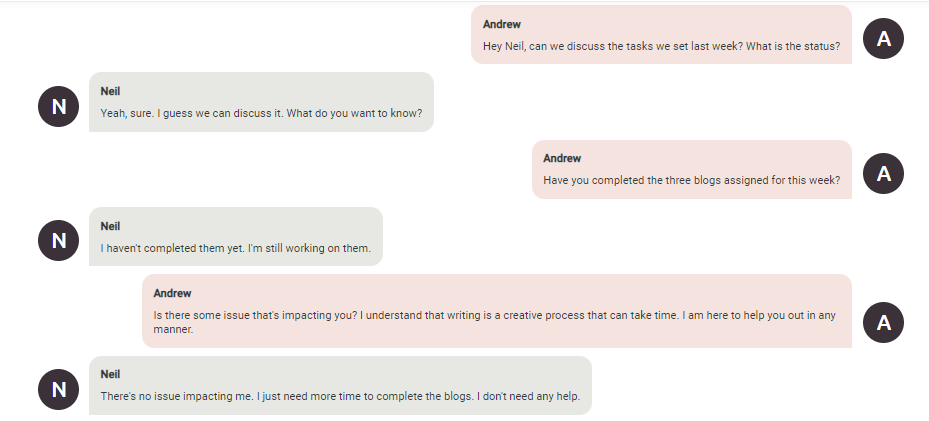
#3 Use Gamification to Pump Up Engagement
Keeping learners engaged is very important for any training program to succeed. AI makes learning more fun and interactive through gamification. This leads to better completion rates and help people remember what they learn. Gamification adds game-like features, such as points, badges, leader-boards, and challenges, to learning. What’s more, AI adjusts these features to fit each learner’s likes and progress, which boosts engagement and motivation. There are many ways to add fun to learning and development with AI, such as:- Personalized challenges: AI creates challenges that match each learner’s skill level and goals.
- Adaptive feedback: AI systems give quick feedback and support, improving the learning process.
- Progress tracking and rewards: AI checks how learners are doing and give points, badges, or other rewards to keep them motivated.
#4 Forecast Learning Outcomes with Predictive Analytics
AI can help learning and development by predicting future learning results and trends. It looks at past training data, how learners perform, and industry standards. This way, AI can figure out how well training programs work and find ways to make them better. Imagine an AI system that tells who might fall behind in their training. It can also show which training programs will help improve job performance. These insights help L&D leaders make smart choices. You can use data to get the most from your training money and align L&D programs with company goals. Predictive analytics also helps your L&D teams act ahead of time. Then, you can give the right support to learners who need it the most.Other Interesting Reads
#5 Build Empathy with AI-based Personalization
Do you know what’s the hardest part of ensuring that coaching is successful for employees? It’s neither the money nor the time. More often than not, it’s the people and the relationship. The success of coaching, which is a very common mode of developing leaders and managers, hinges on a safe and secure relationship between the learner and the coach. For most professionals, this is hard to get right since it involves opening up either in front of a stranger or with someone who’s their senior and potentially impacts their promotions and growth within the company (at times, outside, too, due to their networks.) As a result, even access to coaching is not the end-all because unless the HR teams and every individual involved in the process make a conscious effort to make vulnerability safe, there are bound to be limitations. There are a few practical challenges, too, such as the coach not keeping up with the learner between sessions, lack of reinforcement, and missing constant support. Challenges, after all, do not pop up on a schedule. In such a scenario, empathy and a premise that promises safety become the top priorities for any L&D team. AI coaches can help you achieve this. For example, Merlin is designed with the values of user-centricity and empathy in coaching at its core. It further ties into your company’s policies, mission, and values and brings them up during the coaching conversations with your employees. And, of course, it remembers the past conversations, so there’s no worry of catching up or hesitating before bringing up something awkward. AI could be your solution to the perpetual coaching problems that keep showing up.#6 Add AI to Reinforce Learning After Training
Today’s fast-paced world demands sticky learning. We need to keep up with changes and connect the dots rather than memorize endless lists of items. The way to thrive in this scenario is constant reinforcement of learning. Teams still treating learning and development as a one-stop exercise are setting themselves up for failure—unless, of course, they adopt AI for learning and development and use it to reinforce ideas consistently. The most straightforward way of doing this is feeding the material to AI and prompting it to test our knowledge. But is that all? Surely not. For instance, the managers taking up any Risely masterclasses get months of complimentary access to Risely, offering interesting ways to continue learning without breaking their schedules. For one, they get access to daily nudges and learning activities that tie into the skills they need to build. As a result, the practical focus on skills goes on for a longer time. If some tips don’t work out or the manager simply wants to talk about something they have tried, they can always come back to Merkin, Risely’s AI coach, who offers 24/7 support. There’s the chance to reassess your leadership skills as the learning journey progresses and closely monitor progress. Consider all this against a leadership development program that offers three days of learning and nothing beyond it. What sounds like a better deal? AI can help you unlock these benefits for your employees, which would have otherwise burnt a hole in your pockets.#7 Conduct Skills Gap Analysis in Real-time with AI
Identifying skill gaps is important for organizations to keep up with today’s fast-changing business world. Checking employee skills manually can take a lot of time and often be wrong. But AI offers a better and faster way to look at skill gaps using data. AI systems can look at employee performance data, their training records, and industry trends to find out where skills need to get better. For instance, if many people in a marketing team have a hard time with data analysis, the AI can point this out as a skill gap that needs fixing. This kind of real-time analysis helps learning and development (L&D) teams to find skill issues early. They can create focused training programs that fit their organization’s needs and help employees build the skills they need to succeed in their jobs.To Sum Up
AI has a lot to offer for learning and development teams. You can use AI in learning and development in many ways. We have curated seven of those fun yet useful methods of applying AI to L&D here:- Use AI to Personalize Learning Content
- Add an AI Coach to Offer 24/7 Support
- Use Gamification to Pump Up Engagement
- Forecast Learning Outcomes with Predictive Analytics
- Build Empathy with AI-based Personalization
- Add AI to Reinforce Learning After Training
- Conduct Skills Gap Analysis in Real-time with AI
Deeksha, with a solid educational background in human resources, bridges the gap between your goals and you with valuable insights and strategies within leadership development. Her unique perspectives, powered by voracious reading, lead to thoughtful pieces that tie conventional know-how and innovative approaches together to enable success for management professionals.
Planning L&D initiatives just got easier!
Grab your free copy of Risely’s L&D strategy framework today and bring your ideas to life.
How to Build a Leadership Journey? ft. Thomas Ulbrich
Effective leadership doesn’t always begin with a grand vision. Sometimes, it takes root in the courage to take the first…
AI and Leadership Development: Driving Synergy for Growth
Sneha MishraApr 14, 2025
AI and Leadership Development: Driving Synergy for Growth You know the frustration all too well. Your organization invests thousands in…
How Are AI Learning Platforms Transforming Leadership Development?
Sneha MishraApr 8, 2025
As an L&D leader, you’re likely familiar with this frustrating reality: 82% of organizations consider leadership development critical(1), yet only…
5 Essential AI Skills for L&D Leaders
Sneha MishraMar 31, 2025
5 Essential AI Skills for L&D Leaders According to LinkedIn’s 2025 Workplace Learning Report(1), 71% of L&D professionals are now…
How to Create a Course with AI: A Guide for L&D Professionals
Sneha MishraMar 20, 2025
How to Create a Course with AI: A Guide for L&D Professionals According to a McKinsey survey(1), only 11% of…

